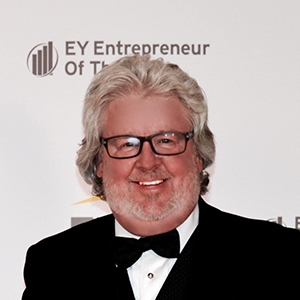Written By: Jess Phillips
I: Introduction
JP: Let’s get to know you. What is your background in relation to Ocean Thermal Energy Conversion (OTEC)?
TJ: I have a doctorate of science degree from Northwestern University. I headed up the Ocean Division of Lockheed, which was located in the San Francisco Bay area. This was before Lockheed merged with Martin Marietta and I continued on after the merger. It was a combination of both commercial and military work. That’s where OTEC was really developed: where we convinced the world that it really could work.
Then I became Head of Renewable Energy for Lockheed Martin. I was involved with all kinds of renewable energies, but OTEC was always my pet project. I saw what it could really do. It was the ultimate answer, so that’s what I continued to push.
JP: How did you get involved with OTE Corporation and what is your role there?
TJ: I joined in 2011 when I met OTE Corporation’s CEO, Jeremy Feakins. We really hit it off. I am the Senior Vice President and Executive Director of OTEC programs, so I handle all of the OTEC work we do.
JP: What’s the role of OTE Corporation?
TJ: OTE Corporation is a developer: their whole objective is to commercialize OTEC, so I saw it as a chance to grab ahold of this. Our responsibility is to have someone develop the OTEC plant and then we run it and operate it. We also provide financing. A lot of these countries that we work with don’t have the money to buy an OTEC plant, so we provide the financing so that the country doesn’t have to pay anything to build a power plant. We will have a power purchase agreement (PPA) and they pay a certain amount of cost per kilowatt-hour. We retain ownership of the plant and maintain it and a portion of the revenue that’s generated. Jeremy has a group of investors that have invested in OTE Corporation.
II: Ocean Thermal Energy Conversion (OTEC) Technology
JP: There’s a lot of misinformation on the web. Before starting this interview, I tried to conduct my own research online because I didn’t want to just use you as an encyclopedia! There are so many different perspectives and it’s very confusing. What approach do you take when teaching the average person about OTEC technologies?
TJ: If you step back and take a holistic viewpoint, that’s where I like to start. What is really needed is a common framework of understanding. For example, you don’t just take an OTEC plant, plop it down some place, and connect it up. There’s a whole systems approach on how you have to do something like this.
There are many stakeholders involved: the public, the power company, the finance people, and the technology people. It’s a very complicated process and unless you’re inclusive and get everybody in the loop and behind you, it’s not going to work. What we’re trying to develop now is an extremely powerful worldwide power structure.
JP: Have we studied OTEC enough to know whether it’s safe and have environmental agencies and organizations approved OTEC for commercial use?
TJ: OTEC is safe. If you have a large conventional power plant (fossil fuel or nuclear) you’re dealing with extremely high temperatures and pressures: many hundreds of degrees Fahrenheit. If there’s a problem, there are a lot of safety risks.
OTEC is very low-temperature: only about 80 °F tops at the surface. You swim in it. It’s also very low pressure, and it just kind of runs itself for years. There’s something called the energy water nexus. If you look at the whole system that controls the earth: water gets heated up by the sun, it gets evaporated, turns into a gas, rises, then cools, then turns back into water. That’s the same way OTEC works.
Obviously, safety is an issue because all of these plants need to meet regulatory requirements. The Department Of Energy and the EPA have been involved. There are minimal environmental effects but since OTEC is site specific, an environmental impact assessment must be done for each site.
JP: The technology for OTEC has been around since the 1970s, yet we’re really only starting to see it take flight now. Why is that? Why didn’t it work when it was originally introduced?
TJ: OTEC is a technology that’s been proven over the years. Experiments were done in Hawaii starting in 1974. That is when the Natural Energy Lab of Hawaii was formed. In 1979, Lockheed built the world’s first successful net generating power OTEC plant (again this is an R&D plant to test technology.) It generated 50 kilowatts. It worked and met its objectives.
The reason we got money to do this is because of the Arab Oil Embargo-when oil went from about $3 to $15 a barrel overnight. Then the Arab Oil Embargo ends. Guess what? Nobody cared about renewable energy anymore. They said, “let’s go back to that really cheap, dirty oil.”
JP: If it was so successful, why didn’t it prevail even through the end of the Oil Embargo?
TJ: The end of the Arab Oil Embargo brought down oil prices to a very low level again and nobody cared about OTEC or other renewable energies in terms of commercialization. Research continued to be done. The Japanese built a system and we built a 50-kilowatt land-based plant built in Hawaii. These are prototype plants to prove the technology, but none of these technologies: solar, wind, or OTEC could compete with dirt-cheap oil. Back in the 70s, no one cared about the environment, and the mind-frame was simple: use the cheapest stuff you can.
Around about 1995 to the 2000s, oil prices started to go up again. At one point, it was about $140 a barrel. Additionally, people began to be concerned about the environment. So, work started on all of those clean technologies again.
JP: Fast-forward to today. How have other countries embraced OTEC?
TJ: The whole world is moving to OTEC. Lockheed, where I previously worked, has now teamed with China to build commercial OTEC plants. They are putting their resources and emphasis on renewably energy right now because of the high pollution levels they have.
I started working with the French company called DCNS 4 years ago and they developed a new division to start working with OTEC. They’re going to build a plant in Martinique, the French territory in the Caribbean. It’s a commercial size plant and they just received $100 million from the European Union to assist in the construction of the plant. DCNS is teamed with OTE Corporation for the U.S. Virgin Island OTEC feasibility study too.
South Korea has completed an OTEC “research and development” plant. They are also selling deep-ocean water where they’re bringing up cold water and they have bottling companies. They’re growing all kinds of fresh-water and salt-water fish.
Japan also just completed their first OTEC R&D plant. Malaysia is in the process of planning to build an OTEC R&D plant also.
JP: How and why are European countries more invested in clean energy than America?
TJ: Europe has renewable energy standards and laws and mandates, which dictate renewable energy generation. They have large national programs to supplement the cost of renewable energy. Germany and France, for example, have very aggressive renewable energy campaigns.
III: OTEC vs. Other Technologies
JP: It sounds like OTEC is implemented a lot more than the media reports, but when one researches renewable energy systems, there’s really no mention of OTEC. That leads people to wonder: if OTEC is so great, why hasn’t it been more popularized?
TJ: OTEC takes some work. It takes time for industry to start up again from the early R&D plants. You can’t build it overnight.
Additionally, the prototype plants were small. We didn’t have the large pipes, pumps, and turbines to generate commercial size power years ago. What happened in the 90s is the oil patch started to develop very large pipes and pumps to allow us to scale up OTEC technology into commercial size plants.
JP: So, think of the ocean as a giant, natural solar panel.
TJ: Yes, OTEC uses the ocean as a solar collector already in place and it also stores the energy so we get constant 24/7 base-load power from OTEC.
JP: How does the cost of energy produced by OTEC compare to current technologies?
TJ: With OTEC the cost of fuel is free because the “fuel” in this case is ocean water. So the price doesn’t increase or decrease over time. The way electricity is sold is with a Power Purchase Agreement (PPA) that is typically 30 years.
The price of fossil fuel is continuously increasing and decreasing so it is difficult to compare the costs. You have all these wild gyrations, which create instability. No one is going to guarantee a price for 30 years. In general, in the markets we are in, the cost of OTEC energy is comparable to fossil fuel.
JP: Speaking of security, can you elaborate on some of the political implications?
TJ: OTEC gives you your own secure natural energy. It’s not controlled by anyone else. It’s a local resource. It’s yours, so it’s secure. It also creates a better local economy: local jobs to build and operate the OTEC plant.
IV: Measuring OTEC Energy
JP: Let’s put OTEC into perspective for the average human being. How much energy can a single OTEC plant produce and how do we measure it?
TJ: The amount of energy stored in the ocean is enormous: it’s about 4,000 times what man uses every day. On top of that, it’s replenished every day by the sun.
What’s really interesting about OTEC is that as the plant size gets larger, the relative cost of electricity decreases. In other words, a 100-megawatt plant produces a lot more electricity per $1 capital cost than a 5 or 10-megawatt plant. That’s really important to remember. We can build very large OTEC plants of 100-megawatt or greater, however we are going to start with smaller plants for our initial market.
JP: Is that sufficient for most small island nations? The Bahamas for example- would a 10-megawatt plant cover the whole country?
TJ: The Bahamas have a large electrical load because of the large resorts there. About half of the electricity they use goes into air conditioning.
Some of the smaller islands would use a 10-megawatt plant. The USVI and Guam, for example, could start out with 5 or 10-megawatt plants and eventual go to larger ones. The advantages of OTEC are that it’s base-load power and it’s climate friendly with no pollution. In OTE Corporation’s markets, we’re initially focusing on smaller island nations and so forth that have a very high cost of energy.
JP: It seems that OTEC is best suited for impoverished, tropical nations. It doesn’t sound like something that we could use in the USA other than Hawaii and California… is that right?
TJ: OTEC is really a worldwide market. It’s not meant to be a U.S. market. It’s meant to be a game-changer worldwide. When we get to the point where commercial OTEC systems are developed and matured, then we can use large floating OTEC plants out in the vast areas of the ocean, generate electricity, and ship it to supply to the mainland in the United States. OTEC can create hydrogen, for example, which would be easy to ship. Another thing it creates is ammonia, which has a lot of energy that’s shipped all over the world now. The good thing about OTEC is that it can create clean water and power, which leads to farming and jobs for many nations. It can boost their quality of life.
With regards to the U.S., Hawaii is an excellent location for OTEC. For the U.S. mainland, there is a deep channel off the east coast of Florida. Measurements have been taken year round and it looks attractive. That would have to be a floating plant because it’s considerably off the coast, but that could get OTEC into the Southeast grid.
The problem with the mainland of the U.S. is that there’s a large continental shelf, it is shallow for quite a distance. You might have the warm water (in the Southern parts of the U.S.) but it’s not deep enough to provide cold water. You need both for OTEC to work.
V: Conclusion
JP: What is your fundamental message to the “Average Joe” regarding OTEC, climate change, or fresh water production? In other words, if you could really drive home one point with our society, what would it be?
TJ: The objective to implement OTEC is not just for clean energy, but also for the production of clean water, water-chilled agriculture, and aquaculture.
The water that we’re bringing up from approximately 1,000 meters (about 3,000 feet) actually originated from the Polar Regions. It stays at the bottom of the ocean because it’s very cold and it has high mineral content. It has chemicals in it that improve blood chemistry. For example, they’re now considering making cosmetics with OTEC water and they even bottle it in Hawaii and sell it in small drinking bottles.
Lack of potable water is one of the major issues in the world right now. Look at California where they’re experiencing a major draught, or India where it rains significantly, but the water is too polluted to drink.
The effects of fossil fuel generating CO2 on the environment, which are devastating, drive it all. The polar ice caps are almost gone. The good news is, a lot of OTEC plants could help reverse the heating of the ocean in a small way, which would help slow down climate change. The important thing right now though, is that it’s not adding to it.
The ocean is where all the energy is and OTEC is just a heat pump. It’s the same way your refrigerator works. It takes all the energy out and creates electricity.
JP: In your opinion, why is OTEC the best option?
TJ: If you had a 100-megawatt fossil fuel system, you’re generating hundreds of millions of C02 per year. Coal is even worse than that. OTEC generates power without burning anything, so it generates no C02. It’s just a system that takes the hot water from the surface, cold water from the bottom, and generates electricity. It uses the same technology as a heat exchanger, which is technology that’s been proven for many years.
That means that the ideal system, when you look at sustainability, is to have solar and wind intermittent and OTEC as base-load energy.
Fossil fuel is running out and some oil fields are going dry, so oil will become too expensive to use or we’ll just run out. The most energy is in the ocean stored as heat, which OTEC converts to electricity.
JP: It sounds like a win-win. The more I learn about this, the more I realize there are little to no risks involved and how efficient it is.
TJ: OTEC technology has been proven. All the right protocols have been developed and proven. The environmental impact of OTEC is minimal compared to every other energy system.
OTEC is a natural. When people wrap their head’s around this, they will sign up!








